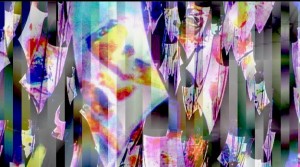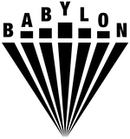Educational program
-
Erandy Vergara's presentation discusses, how interactive installations by Latin American artists reflect on social dynamics mediated by new technologies. It specifically focuses on five contemporary artists: Rejane Cantoni & Leo Crescenti, Daniela Kutschat, Rafael Lozano-Hemmer and Mariela Yeregui, who investigate the possibilities and limits of interactive environments by moving beyond the technologies and the effects produced through interactions between humans and machines.

Tunnel by Rejane Cantoni & Leo Crescenti -
The original program Minecraft is a game made by Notch and Mojang that consists of blocks making up a 3D world. Its initial purpose was to have the player build a shelter and survive against monsters, but players now use Minecraft's 3D blocks to create art — architecture, huge statues, and more. When Multiplayer appeared, people started using Minecraft to create things that Notch had never anticipated by building on each other's ideas. This created a perfect replica of a real-life society including an economic system, which requires logic to participate in.
-
In March, 2012 Bruce Sterling introduced the term ‘new aesthetic’ to discuss “the eruption of the visual language of the digital into the physical.” In September, 2012 art historian Claire Bishop wrote an article in Artforum Magazine’s 50th anniversary titled “The Digital Divide” about the art world’s dismissal of technological art that produced a firestorm in on-line blogs. In October, 2012 The New Museum held a panel “What’s Wrong With Technological Art?” that discussed these themes based on their survey of the history of electronic and other art forms titled “Ghost In the Machine.”
This lecture/presentation will examine and explore these provocative issues and new developments facing the contemporary art world.
Still from I Move in Decades by Ellen Pearlman -
Taras Mashtalir is an artist, composer and sound designer, a classical musician turned electronic sound producer. His compositions are unique blend of different genres morphed together and wrapped into a new aesthetic fabric of electronic ambience. For the past 12 years Taras has produced numbers of albums, collaborating with many major artists. The works also include multimedia installations, soundtracks for the films and animations, as well as music for TV ads and programs like Discovery Science Channel.
Lecture will cover the concept of sonic sculpture, an interactive multimedia artifact that consists of an urban sculpture, static or kinetic, accompanied by sound design in a multichannel configuration.
Conventional urban sculpture is silent. However, it is surrounded by sounds of the city and the constant stream of those sounds constitute ‘sonic pollution’. By introducing the sound design we refine its microclimate and eliminate the sonic pollution by embracing the sounds of the city and including them in a composition that becomes a soundscape.
The purpose of such a soundscape is to breath life into static sculptures and create harmonious sonic aesthetics in the urban environment. -
Mobile structures of programmable media bring metaphor of water to life. Watching it, one can follow the main methods of modern digital art: interactivity, multi modality, process. Used in Apollinaire's kalligramme for the first time, materialised metaphor of water passes through «Text Rain» — an interactive installation by Camille Utterback & Romy Achituv, while the current nature of information is imitated in real time by water-based text generatore «Bit.Fall» by Julius Popp.
This presentation will demonstrate the current status of generative poetry and deliver some perspectives of what to come next.
Educational program will take place at The Youth Educational Center of The State Hermitage (Palace Square, 6-8.


















